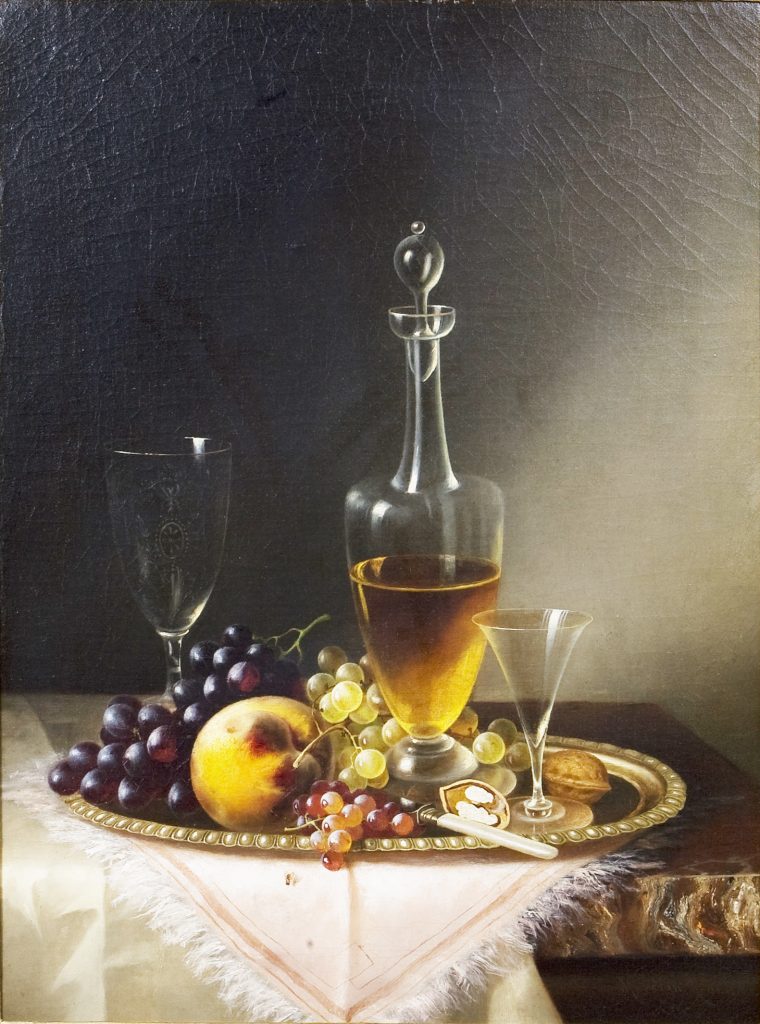
Originating in Lancaster, Ohio, Morston Constantine Ream closely followed the American still-life tradition established by the renowned Peale family of Philadelphia. American still-life artists simplified the lavish compositions of Dutch painters, and avoided vanitas, references to death or the transitory nature of time. They retained the use of still-life as a vehicle for showcasing their technical command of painting. Ream’s isolation of objects on a simple table against a plain wall highlights their form and texture while the selection of objects (fine glassware, napkin and tablecloth with fold marks) suggest a special occasion. The illusionistic depiction of a fly on the tablecloth reflects the continuing American fascination with trompe l’oeil, an optical illusion technique meaning “to fool the eye.”

